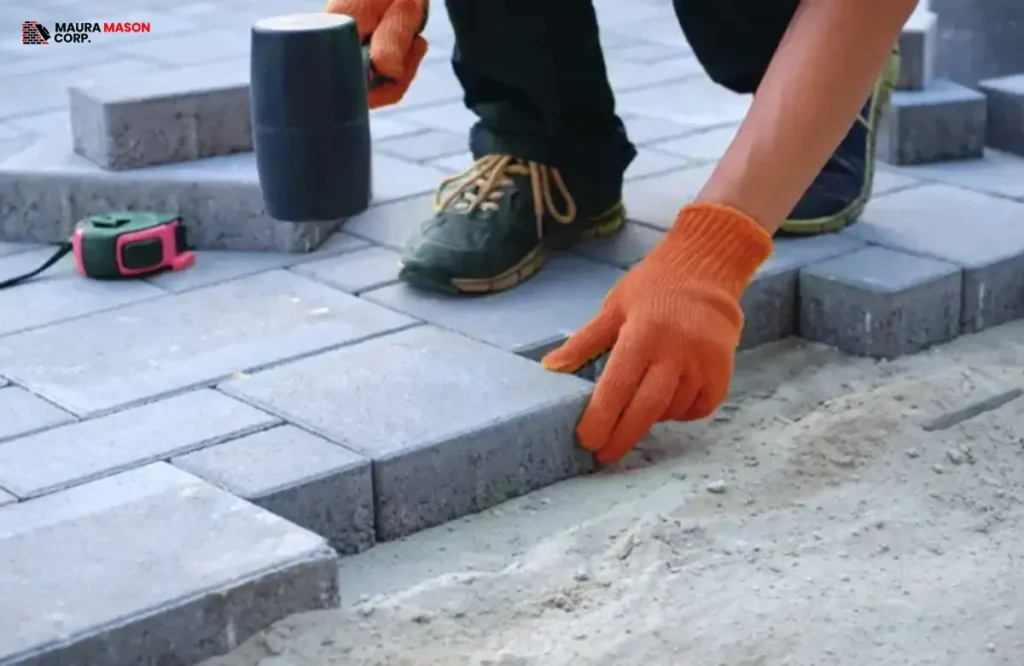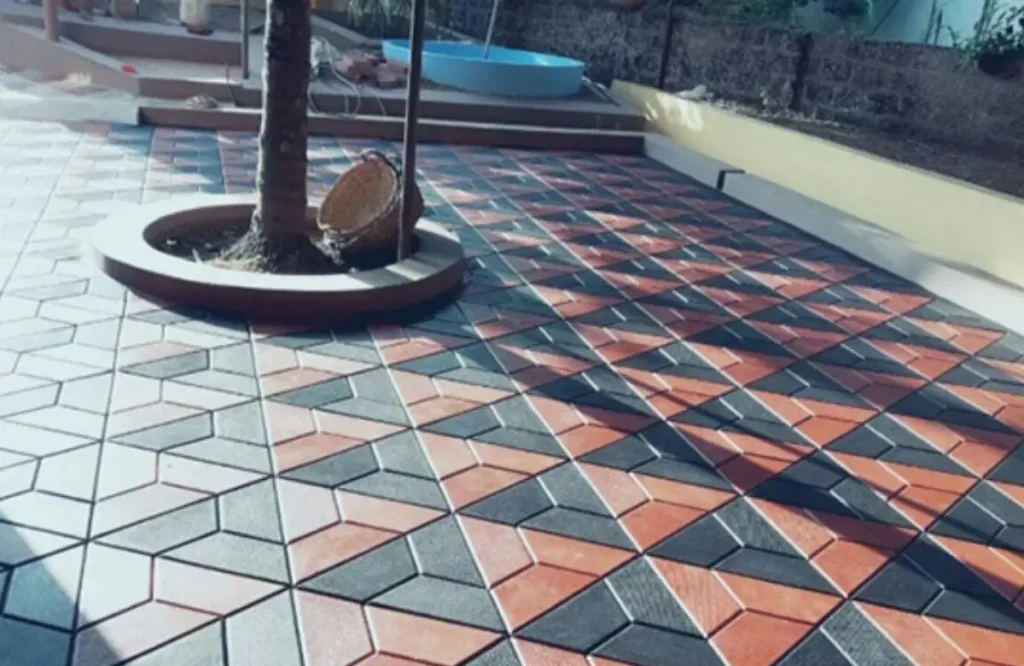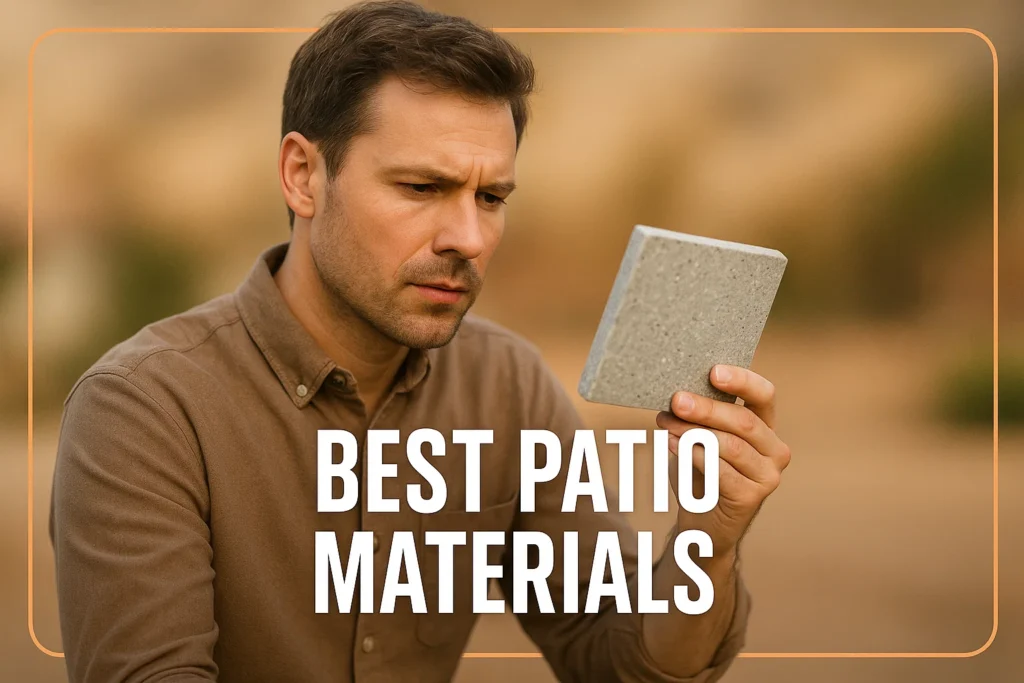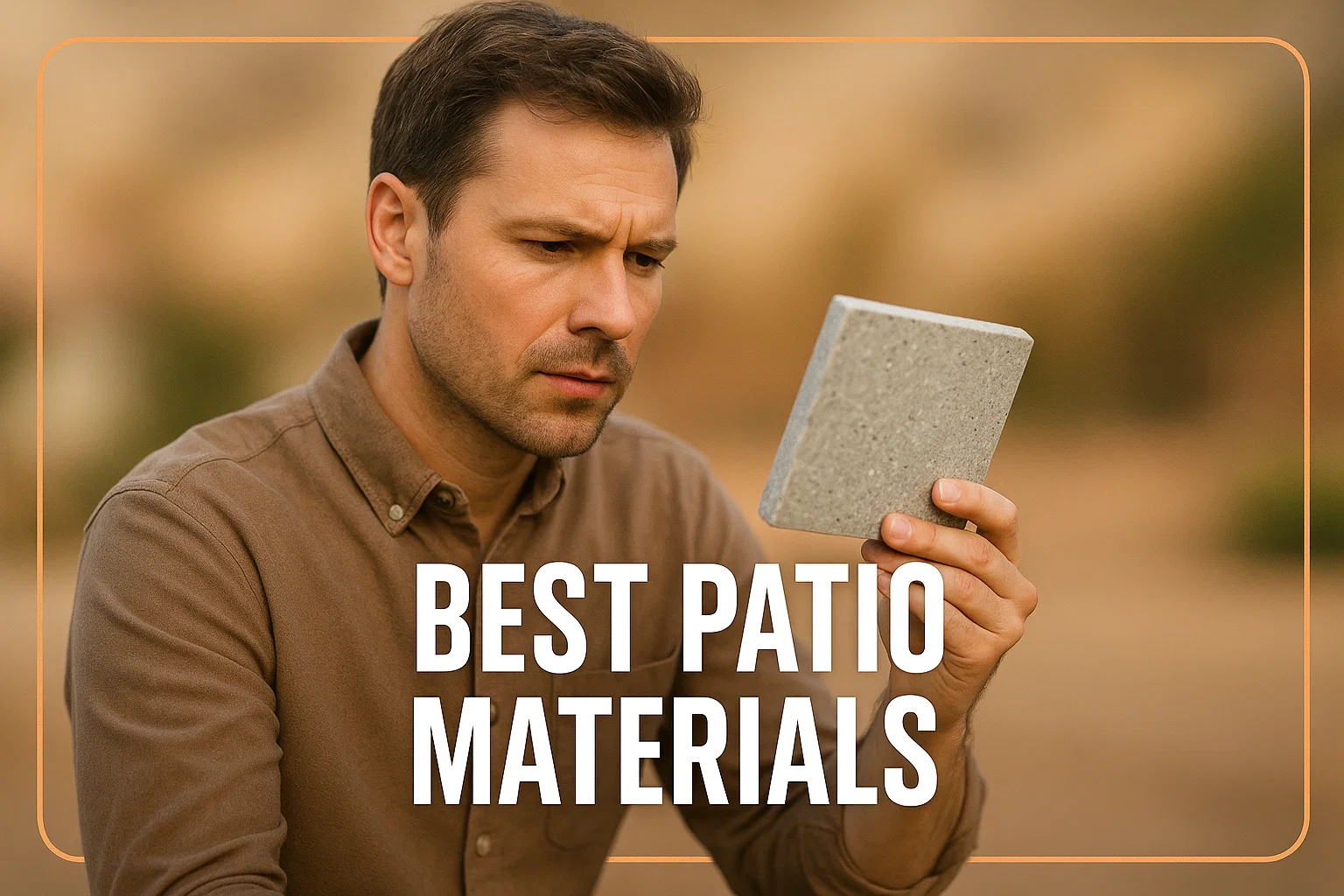The winter season brings its own unique set of challenges in the outdoor spaces, particularly patios. Freeze-thaw cycles, snow, ice and cold temperatures have the potential of damaging many materials, making them less durable. The selection of the right materials for a patio is critical to help in developing an outdoor space that will not only survive winter but will be safe as well as attractive throughout the year. This blog will discuss the most appropriate patio material, helping homeowners make informed decisions for their outdoor living spaces.
Top Patio Material Options for Winter Weather
Winter weather presents a great challenge to patio material of the right choice. The most suitable materials that have combined durability, beauty, and freeze-thaw cycle resistance are listed below:
Concrete Pavers
Paver concrete is very stable and strong in cold weather. They are designed with small spaces between the pavers that facilitate the growth of ground in a freeze-thaw cycle, and limit crack formation. They will provide non-skid surfaces and will be available in multiple colors and textures to suit every style. Pavers are not expensive to install since they can be easily replaced in case of any form of damage.
Natural Stone
Organic stones like slate, bluestone, granite, and flagstone work well in winter patios due to their capacity to resist weather changes and moisture. These materials provide a timeless and organic look and natural slip-resistant surfaces. This improves the longevity of the sealing strategy on PC and prevents its staining due to snow and ice.
Brick Pavers
On the one hand, brick pavers have a traditional warm appearance and even a reasonable cold comfort. They are recyclable and made of clay. They are not as tough as concrete or natural rocks in severe cold, yet they are workable and can be replaced individually in case of harm. They also minimize the chances of slipping on icy roads due to their textured surface.
Porcelain Pavers
Porcelain tiles have minimal water retention and, therefore, are very resistant to freeze-thaw damage. They have low-maintenance, durability and they are modern and sleek. They cost more upfront, but due to their duration in winter conditions, they are a worthwhile investment.

Other Winter-Hardy Solutions
Composite decks, such as Trex and pressure-treated wood, are most frequently used on decks; however, these may also be used on patio spaces that need wood surfaces. These materials are not prone to mold, warping, or cracking and but wood needs more maintenance than composite.
Choosing among these material options allows you to build a winter-tested patio that will look beautiful and practical and handle cold-weather tests without much difficulty.
Comparing Popular Patio Surfaces
The selection of a desired patio material must be balanced between durability, maintenance, aesthetics, and price. The most popular patio surfaces are compared here to guide towards an informed choice:
| Material | Pros | Cons | Installation Cost (per sq ft) |
| Concrete Pavers | Durable, versatile, easy to replace | Can crack if poorly installed | $8.70 to $16.70 |
| Natural Stone | Elegant, weather-resistant | Higher cost, needs sealing | $15 to $40 |
| Brick Pavers | Classic look, slip-resistant | Can shift, requires upkeep | $14 to $24 |
| Porcelain Pavers | Waterproof, low maintenance | Higher upfront cost | $10 to $22 |
Different materials are useful for diverse needs based on the climate. Winter is best characterized by concrete and natural stone. Porcelain is modern, low-maintenance grace. Brick is classic and moderately maintained. Gravel and wood are less expensive but need more care or attention.
Tips for Maintaining Patio Materials in Winter
Winter maintenance is required to ensure protection against damage to patio materials, snow, ice, and freezing. The following are major tips that can keep the patios beautiful even during the cold months:
- Consistent Snow Removal: Remove snow regularly with plastic or rubber-headed shovels; otherwise, the painting can be scratched. Avoid metal tools, and consider snow blowers for larger areas. Snow removal stops the accumulation of and moisture accumulation, which can cause cracks.
- Safe Ice Removal Methods: Use pet-safe and non-corrosive ice melt substances to avoid slippery floors without damaging the materials of the patio. Do not use salt-based products, which lead to staining and corrosion.
- Seal and Water-proof Surfaces: Before winter, seal patios with a quality sealant to prevent the entry of moisture and frost damage. Reapply sealant where necessary to sustain efficient protection.
- Clean Debris Often: Sweep or leave leaf blowers on a dry day, clearing any debris of leaves, dirt, and branches to minimize retention of moisture and mold.
- Select optimal Cleaning Conditions: On dry days when the temperatures are warmer than freezing, only the cleaning of patios should be performed.
- Protect Furniture and Accessories: Leather or bring in lightweight patio furniture to avoid winter wear and tear.
Choosing the Right Patio Material for Winter Use

Outdoor patios are not suitable during the winter because of harsh weather conditions such as icy temperatures, snow and ice. In order to make a patio beautiful and enduring during the brutality of winters, selecting materials that cope with it is essential. Not every patio surface is des
igned to survive freezing weather and moisture without cracking or staining or getting slippery.
Porcelain tiles, natural stone, porcelain, concrete pavers and brick pavers are frequently used. Each has its own strength, style, and convenience balance. Concrete pavers are multi-purpose and durable, natural stone gives a long-term style, brick has a vintage appearance, and porcelain is contemporary and dries water well.
Find out what is the best in winter patios and know how to sustain it to be beautiful and safe. The correct decision results in a welcoming outdoor environment that you can use all year round, no matter the season.
Conclusion
The proper selection of patio materials and their care, even in winter, can significantly contribute to the duration and safety of your patio. Care can make such durable materials as concrete pavers, natural stone, and brick and porcelain to withstand winter weather. Cleaning, snow removal, and sealing your patio will ensure it is well-kept and looks good regularly.
For professional guidance on choosing and installing patios that are winter-ready, rely on Maura Mason. We are the experts in high-quality masonry and patio services designed to last through all seasons. Get in touch with us and build a beautiful and long-lasting outdoor living area throughout the year.
FAQs
Which is the most suitable patio in winter?
The concrete pavers, natural stone, brick, and porcelain work well in cold climates because of their resistance to freeze-thaw damage.
How often should I seal my patio for winter?
When preparing your patio before winter, close it up once annually to avoid the damage caused by moisture and frost.
Can I use salt to melt ice on my patio?
Certain materials used in patios may be destroyed by salt. In order to maintain surfaces without damage, use non-corrosive ice melts that are pet-safe.
How can I remove winter snow without damaging my patio?
Clean snow often using plastic or rubber shovels. Do not use metal shovels to avoid surface scratches.
Will brick pavers crack in winter?
Brick pavements can move but tend to be strong. Installing and maintaining properly mitigates the risks of cracking.
Is porcelain the right option for a winter patio?
Yes, porcelain is the type of pavement with minimal water absorption and with a high resistance to frost damage.





